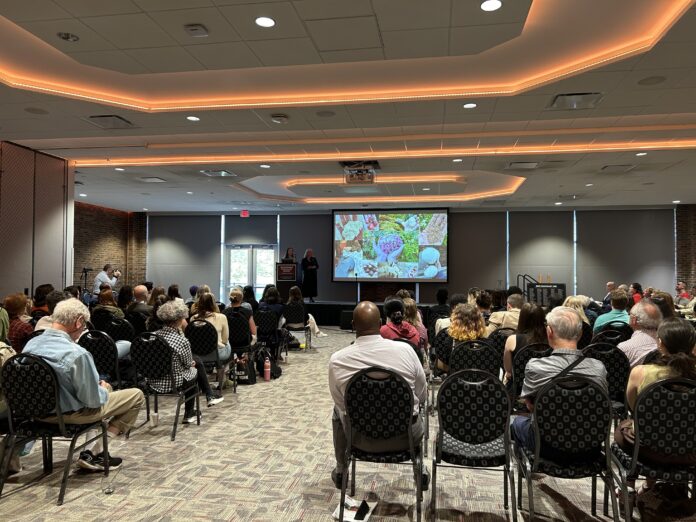
COLUMBUS — Sometimes returning to old ways is a good thing, and to many Ohioans, that rings true when it comes to producing natural fibers for clothing once again.
The need for this new (yet old) marketplace was the topic of discussion at Ohio State University’s College of Food, Agricultural and Environmental Sciences’ “Farm to Fashion: Natural fiber footprints and futures” event on April 21 where Ohio farmers and natural fiber advocates discussed the future of a natural fiber industry in the state.
But there’s a huge obstacle in the way: there are few clothing manufacturers in the United States and most fiber is processed overseas. Despite this, producers and residents alike are building up the industry so, when the time comes, Ohio will be ready.
“Now is the time to start thinking about where our garments come from,” said Sarah Pottle, co-owner and co-founder of Rust Belt Fibershed in Cleveland, Ohio, at the Earth Day event.
Plastic clothing
Currently, polyester is the most produced fiber globally, accounting for 57% of total fiber production, according to Textile Exchange’s 2024 Materials Market Report, an international non-profit organization advocating for a sustainable apparel industry.
Polyester is a petroleum-based fiber; its production can be linked to increased pollution via air and water, as it sheds microplastics, which can end up in water streams. It is a relatively newer fabric, with commercial clothing production beginning in the 1950s.
Natural fibers, in contrast, have a much longer history in clothing production: cotton has been used as a textile fiber for over 7,000 years, wool for over 12,000 years and flax and linen for at least 30,000 years.
According to recent U.S. Department of Agriculture statistics, the United States produces so much cotton that it is the world’s leading cotton exporter, producing roughly 35% of global cotton exports in recent years.
OSU’s natural fiber event brought together flax, hemp, cotton and wool producers who spoke about their business and the potential future for a sustainable fiber industry in Ohio.
Many speakers at the Earth Day event say it is time to capitalize on this domestic natural fiber supply and build something that supports local farmers and communities.
A manufacturing problem
Laurel Shouvlin, an alpaca farmer and owner of Bluebird Hills Farm in Springfield, Ohio, and Celeste Navarre Stewart, a fashion and fiber artist, are at the forefront of demanding change in the textile industry. The pair started traveling across the country in 2018 to promote sustainable fibers for clothing at conferences and fiber events.
Shouvlin has been raising Huacaya and Suri alpacas on her farm since 1998. She sends her finer fiber, mostly made from Suri fleece, to a local mill in Oxford, Ohio, to be made into yarn. When she gets the yarn back, she uses plants like goldenrod, ragweed, nettle and pokewood to naturally dye the yarn, in addition to other dyes, and weaves the yarn into a product for sale. She also sells dyed yarn.
For her coarser fiber, Shouvlin joins a cooperative of alpaca farmers to send the mill-processed yarn off to a manufacturing plant. The manufacturer processes the yarn into hats, socks and scarves, which Shouvlin will then dye.
Shouvlin has sold her dyed yarn and wool products at fiber festivals and local stores, but like most wool producers and other natural fiber farmers, finding a place that will take the yarn and process it into fabric is a challenge. It can be expensive to ship yarn to manufacturers, which are not usually local, and hand-weaving the yarn is time-consuming. That’s why Shoulvin joins a cooperative to make her alpaca products.
Even local mills that process the wool into yarn are becoming harder to find. For instance, many wool producers in Ohio used to send their fiber to Mid-States Wool Growers Cooperative, which would grade and sort the wool into best uses, and then ship it off to be processed into yarn or fabric. Shouvlin remembers visiting there as a girl with her mom, watching wool being spun into yarn.
But after more than a century of business, the company closed its doors in 2023, citing there was “no market for wool.”
Making bigger products, like sweaters, is also a challenge in the U.S. “In order to have a commercial industry, you need a high number of alpacas, but you also need a market for the fiber,” Shouviln said. She adds that most U.S. manufacturers are not equipped to make bigger wool products.
First steps
The U.S. wasn’t always this way. In the 1960s, 95% of apparel worn in the United States was made domestically. By the end of the 20th century, that number dropped to 29%. Today, only 2% of clothing is made in the U.S., according to the U.S. Bureau of Labor Statistics, mostly due to lower labor and material costs in other countries.
Additionally, between 1979 and 2019, the U.S. textile and apparel industry lost 81% of manufacturing jobs, according to the U.S. Bureau of Labor Statistics. If a domestic commercial clothing industry is going to exist, big-scale manufacturers need to be more prevalent in the U.S., on top of other aspects.
“In order for clothing production to be localized, there is a need for significant reinvestment in infrastructure to build a fiber-to-finish product supply chain, including spinning mills, weaving and knitting operations, dye houses and cut and sew businesses,” said Lisa Goldsand, CEO of Circular Thrift LLC, a sustainable fashion company in Columbus, at the event. She adds that workforce development would also be needed to train a new generation of textile workers.
Before manufacturing can be built, though, consumers need to be aware of the problem, according to Sarah Pottle, co-owner and co-founder of Rust Belt Fibershed in Cleveland, Ohio.
Pottle and her twin sister Jess Boeke started their company to do just that: start the conversation. Rust Belt Fibershed is a bioregional community — spanning parts of Michigan, southern Ohio, western Pennsylvania and western New York — that connects people from all aspects of the fiber industry, including farmers, processors and designers.
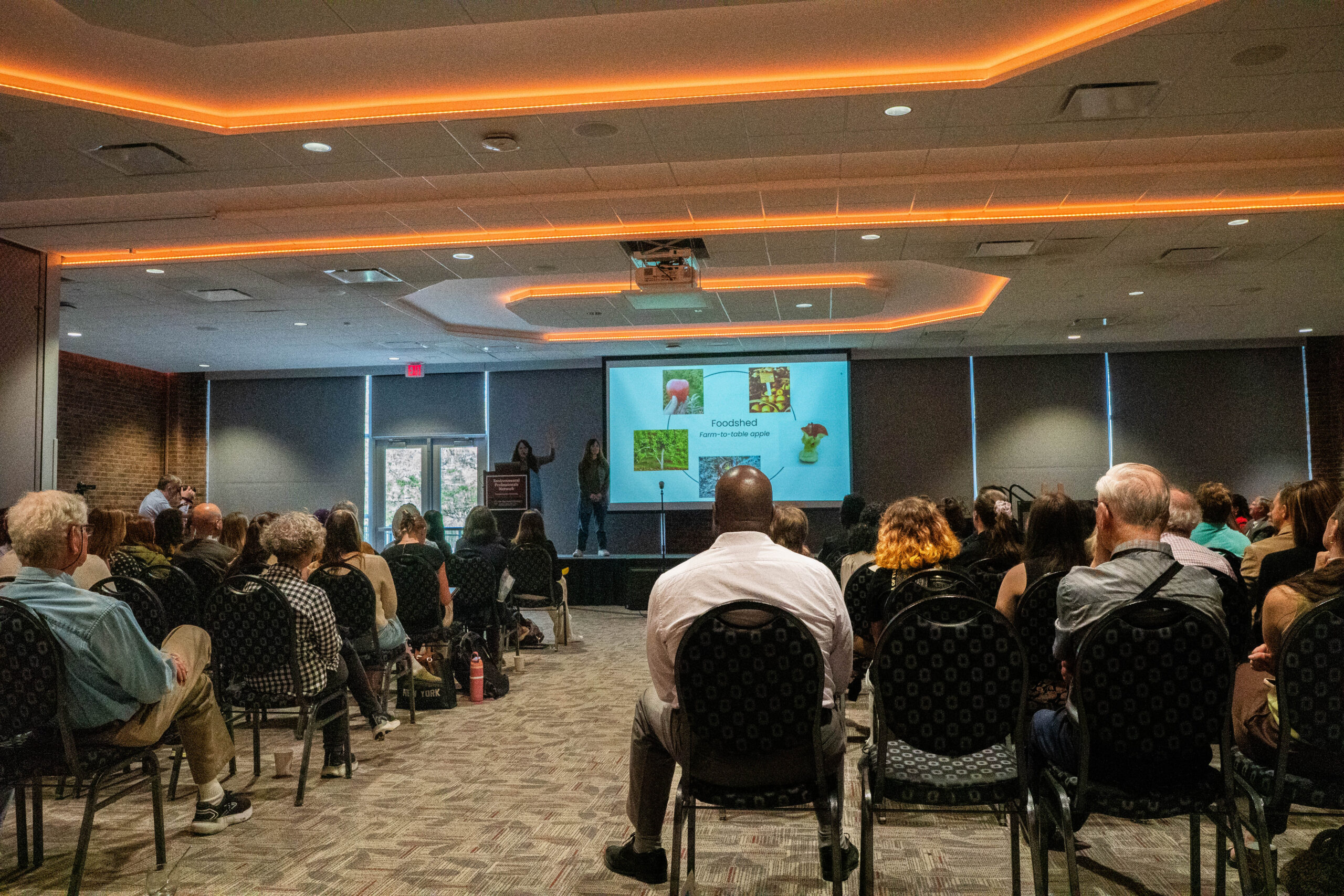
To do this, they host annual symposiums where speakers and other experts in the fiber field come together to discuss hot topics in the industry as well as put on learning stations, vendor tables, seed swaps and various hands-on activities. They also host art projects, grow projects, dye days, garden visits, milling field trips and other events to get local communities involved.
One of Rust Belt Fibersheds’ partners is mother and daughter duo Abbe and Lily Turner from Common Grounds, who grow flax in Newark, Ohio and are part of the organization’s Rust Belt Linen Project. Through the project, individuals or groups interested in growing flax for linen can receive seeds from the organization. Abbe and Lily also gave a presentation at the Earth Day event.
“When we’re thinking about where our clothes come from, we want to determine what is the beginning of that linear supply chain, and where are we getting our materials from,” Boeke said, at the event. “I don’t know about you. I don’t really want a refinery in my hometown, right? We want farmers around, right? We want that pastoral setting. We want to be close to the land.”
Pottle says starting a regional supply chain for natural fibers would lead to a large workforce, an industry for farmers to enter and overall economic growth. It would also be more sustainable than the current textile industry in Appalachia: petrochemical plants, which produce plastic.
“If somebody is saying ‘Well, it’s economic opportunities to have this big industry come in,’ for what, five years until it destroys the land, and then they move on and this place is impoverished,” Pottle said. “‘Oh, it’s an economic opportunity, OK.’ But there’s ways we can do this without putting people in petrochemical plants or in danger of breathing in fumes.”
While the bulk of U.S. petrochemicals is based in Louisiana and Texas, the industry is growing in Appalachia; Shell opened one of the largest petrochemical facilities in the Northeast, known as Shell Polymers Monaca, in Beaver County, Pennsylvania, in November 2022.
Pottle says it is time to redefine the world’s definition of economic opportunity to account for more than just jobs but the economic benefits of livestock, water and other environmental factors.
While the Rust Belt Fibershed isn’t producing any clothing yet, starting the conversation and creating a community interested in growing fiber is the first step. The next step is winning over the American people.
“And maybe (the) most important change: a shift in consumer behavior is needed where Americans pay for quality, ethics and sustainability associated with domestically produced clothing, and where they recognize that they can afford this by purchasing fewer, better quality garments than they have previously,” Goldsand said.
(Liz Partsch can be reached at epartsch@farmanddairy.com or 330-337-3419.)





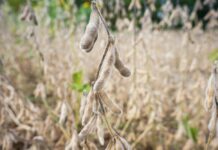
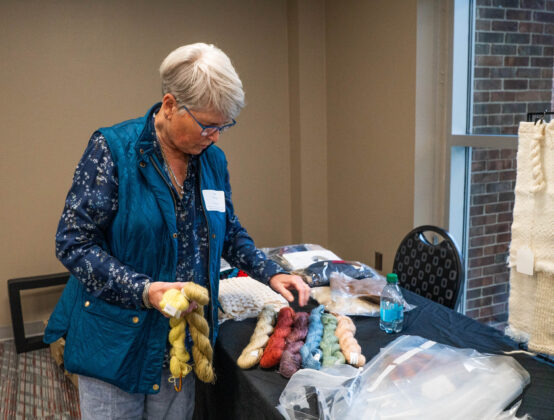
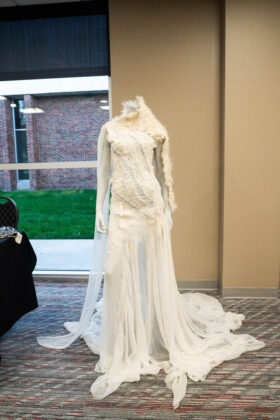
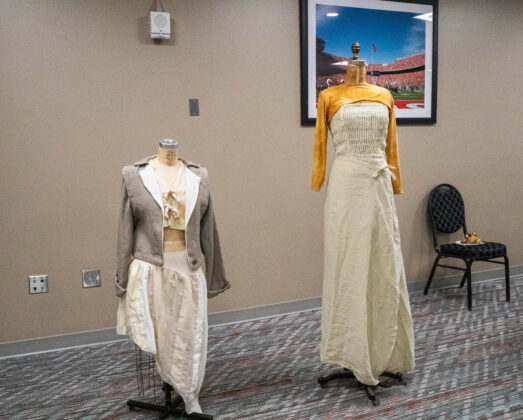
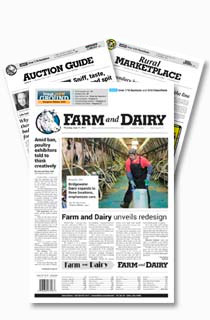



Do you know if hemp as a fiber will be allowed to be grown in the US for fiber without all the federal restrictions? Could you see the possibility that a regular person could grown this plant for fiber in the future?